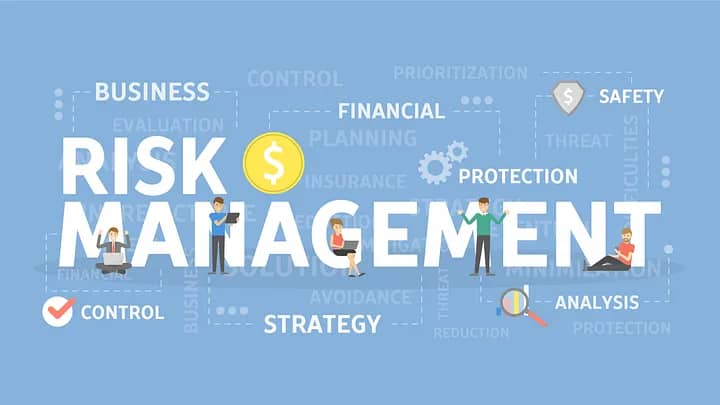Balancing Risk and Reward: Finding the Sweet Spot in Investment.

Investing is often likened to a delicate dance between risk and reward. If you aim for substantial returns, you must be willing to face different levels of uncertainty. In this post, we will go into balancing risk and reward in investment, revealing strategies that can help you find the sweet spot for your financial journey.
What Is Risk and Reward
Before we can talk about finding equilibrium, we must first define what we mean by risk and reward:
-Risks: The potential for loss or the chance that an investment will not perform as expected. This can stem from market volatility, economic downturns, or poor company performance.
-Rewards: The gains or profit you can potentially earn from your investment. Higher rewards usually correlate with higher risk levels.
As the pioneer in financial education, Benjamin Graham, aptly stated, “The investor’s chief problem—and even his worst enemy—is likely to be himself. Understanding your risk tolerance is a necessity.
The Importance of Risk Management
Risk management is essential when it comes to investing. Managing your risk effectively ensures asset preservation while seeking potential gains. Here are key concepts to consider:
– Diversification: Spread your investments across various asset classes to mitigate risk.
– Asset Allocation: Determine the right mix of stocks, bonds, real estate, and cash that aligns with your risk tolerance.
– Research and Knowledge: Understanding the market, sectors, and individual investments can provide insights into potential risks.
According to a survey by Charles Schwab, 68% of investors claim they are comfortable with some level of investment risk**. So, how do you find your comfort zone?
Identify Your Risk Tolerance
Your risk tolerance is your capacity and willingness to bear risk. Here’s how to assess it:
- Financial Situation: Evaluate your current finances, including income, expenses, and savings. Are you able to absorb losses?
- Investment Goals: Consider what you are trying to achieve. Are you saving for retirement, a new home, or your child’s education?
- Time Horizo n: Short-term investors have lower risk tolerance compared to long-term investors due to market fluctuations.
To get started, consider asking yourself these questions:
– What would be my reaction to a 20% drop in my investment portfolio?
– Am I investing for long-term growth or short-term gains?
Categories of Investments
Several categories of investments come with different risk profiles.
- High-Risk Investments:
– Cryptocurrencies
– Emerging markets
– Tech stocks
- Moderate-Risk Investments:
– Index funds
– Blue-chip stocks
– Corporate bonds
- Low-Risk Investments:
– Government bonds
– Money market funds
– Savings accounts
The Risk-Reward Ratio
The risk-reward ratio is a key concept you should understand as you seek the sweet spot. This ratio compares the potential profit of an investment to its potential loss.
Typical risk-reward ratios in investing are as follows:
–1:1– Equal risk and reward.
– 1:2– Higher potential reward than risk, preferred by prudent investors.
-1:3– Represents a more significant upside compared to potential loss, sought by many traders.
William J. Bernstein, author of “The Intelligent Asset Allocator,” states, “The future is always uncertain. What is certain is that you must learn to accept uncertainty.”
Strategies for Balancing Risk and Reward
Finding the sweet spot requires employing a mix of strategies tailored to your preferences:
1. Dollar-Cost Averaging
Investing a fixed amount regularly, regardless of market conditions, can reduce the impact of volatility.
PROS:
– Reduces market timing risk
– Access to more shares during downturns
2. Setting Stop-Loss Orders
A stop-loss order helps protect your investment by automatically selling assets when they reach a specified price
PROS:
– Limit potential losses
– Removes emotional decision-making
3. Regular Portfolio Review
Keep your portfolio aligned with your risk tolerance and investment goals.
PROS:
– Ensures diversification remains intact
– Adapts to changes in market conditions
4. Education and Continuous Learning
Investing is ever-evolving. Keeping yourself educated can prevent costly mistakes.
PROS:
– Informed decisions
– Awareness of market shifts
The Role of Emotions in Investments
Emotions play a big role in investment decisions. Fear and greed often drive market behavior.
- Fear: CThis couldlead to hasty decisions, such as selling during a market downturn.
- Greed: This mayy lead to taking excessive risks for short-term gains.
As Warren Buffett famously said, “The stock market is designed to transfer money from the Active to the Patient.”
So, how can you manage emotional decision-making?
Techniques to Manage Your Emotions
- Set Clear Investment Goals: Write down your objectives and keep them in mind during market fluctuations.
- Follow a Strategy: Stick to your risk management plan, regardless of market sentiments.
- Take Breaks: If you feel overwhelmed, stepping away from the screen is occasionally beneficial.
Case Studies Of Some Successful Risk-Rewards Balances
Several investors have successfully navigated the risk-reward landscape. Here are a few:
Example 1: Warren Buffett
Buffett’s investment strategy involves picking fundamentally sound companies with strong growth potential. He famously stated, “Risk comes from not knowing what you’re doing.” This underscores the importance of research in investing.
Example 2: Ray Dalio
Dalio, founder of Bridgewater Associates, emphasizes diversification. In his book “Principles,” he advises balancing risk by maintaining an effective portfolio overlay that reduces volatility while aiming for strong returns.
Example 3: Cathie Wood
Wood of ARK Invest is known for investing in disruptive technologies. She balances high-risk investments by diversifying into various innovative sectors, such as biotechnology and artificial intelligence.
Potential Risks of High-Reward Investments
While high-reward opportunities are enticing, they come with risks that you should be aware of:
- Market Volatility: Prices can fluctuate dramatically.
- Lack of Regulation: Emerging sectors may have less oversight, increasing potential risks.
- Emotional Stress: Higher stakes can lead to increased pressure and emotional decision-making.
FAQs
Q1. What are the signs that I might be taking too much risk?
A: If market fluctuations cause you extreme stress or you find yourself reacting impulsively, you might be overexposed.
Q2. How often should I review my investment portfolio?
A: Ideally, conduct reviews at least quarterly, but stay flexible and adjust as needed based on market changes.
Q3. Is there a guaranteed way to balance risk and reward?
A: No method can ensure complete safety. However, creating a well-diversified portfolio and practicing sound risk management can provide a solid framework.
In the world of investing, finding the perfect balance between risk and reward is an ongoing journey. By understanding your risk tolerance, employing effective strategies, and keeping emotions in check, you can work towards maximizing returns while minimizing potential losses.
Investing in financial markets contains inherent risks, and the value of your investments can fluctuate. Always conduct your research or consult a financial advisor before making investment decisions.









https://tadalaccess.com/# what possible side effect should a patient taking tadalafil report to a physician quizlet
cialis best price cialis and alcohol cialis free 30 day trial
cialis 20 mg from united kingdom cialis and alcohol or cialis online delivery overnight
https://www.hobowars.com/game/linker.php?url=https://tadalaccess.com best time to take cialis
how many 5mg cialis can i take at once cialis manufacturer coupon and cialis from canada pictures of cialis pills
canadian pharmacy ezzz cialis: buy cialis no prescription australia – cialis wikipedia
cialis indien bezahlung mit paypal Tadal Access cialis otc 2016
https://tadalaccess.com/# buy cheap tadalafil online
generic cialis 5mg cialis from india online pharmacy or cialis professional
http://www.res-net.org/linkpass.php?link=tadalaccess.com&lang=de cialis and adderall
cialis 20 mg price costco purchase generic cialis and cialis shipped from usa buy cialis with american express
cialis 20mg for sale buy voucher for cialis daily online or cialis generic over the counter
https://maps.google.com.sb/url?sa=t&rct=j&url=https://tadalaccess.com how much does cialis cost per pill
no presciption cialis cialis 5mg daily how long before it works and maxim peptide tadalafil citrate tadalafil lowest price
cialis 20 mg from united kingdom: TadalAccess – buy cialis online overnight shipping
cialis 5mg side effects TadalAccess cialis milligrams
https://tadalaccess.com/# cialis timing
cialis commercial bathtub: does tadalafil work – canada cialis generic
tadalafil buy online canada cialis free trial buy cialis canada paypal
cialis definition: Tadal Access – tadalafil online paypal
tadalafil eli lilly cialis 40 mg or do you need a prescription for cialis
http://ewin.biz/jsonp/?url=https://tadalaccess.com what is the generic for cialis
tadalafil 10mg side effects buy cialis from canada and what are the side effects of cialis buying cialis online safe
https://tadalaccess.com/# pastilla cialis
letairis and tadalafil how many mg of cialis should i take or cialis 40 mg reviews
http://wishforthis.com/Shop/Redirect.php?URL=http://tadalaccess.com/ cialis tadalafil 5mg once a day
cialis 5mg price walmart cialis tablets for sell and safest and most reliable pharmacy to buy cialis cialis or levitra
cialis lower blood pressure TadalAccess centurion laboratories tadalafil review
brand cialis: Tadal Access – vigra vs cialis
over the counter cialis walgreens buy generic cialis online or cialis price south africa
https://www.scga.org/Account/AccessDenied.aspx?URL=https://tadalaccess.com cialis stopped working
cialis tubs cialis 5mg daily how long before it works and how to get cialis for free cialis coupon 2019
https://tadalaccess.com/# cialis website
cialis free trial Tadal Access tadalafil 10mg side effects
I know this web site presents quality based content and additional
material, is there any other web page which provides these data in quality?
casino en ligne
Howdy! I could have sworn I’ve visited this blog
before but after looking at some of the posts
I realized it’s new to me. Regardless, I’m definitely delighted I discovered it and
I’ll be book-marking it and checking back often!
casino en ligne
Hola! I’ve been reading your website for some time now and finally got the bravery to go ahead and
give you a shout out from Kingwood Texas! Just wanted to tell
you keep up the great job!
casino en ligne
Nice weblog right here! Also your web site a lot up very fast!
What web host are you the usage of? Can I am getting your associate
hyperlink in your host? I wish my web site loaded up as fast as yours lol
casino en ligne
wonderful publish, very informative. I wonder why
the other experts of this sector do not realize this. You must proceed your writing.
I am confident, you have a huge readers’ base already!
casino en ligne
Hi, i believe that i saw you visited my weblog so i got here
to return the choose?.I am trying to to find
things to enhance my site!I suppose its good enough to make use
of some of your ideas!!
casino en ligne
We are a bunch of volunteers and opening a new scheme in our community.
Your website provided us with useful info to work on. You’ve performed a
formidable process and our entire community will likely be thankful to you.
casino en ligne
Awesome issues here. I’m very satisfied to see your
article. Thank you a lot and I am taking a look ahead to
contact you. Will you kindly drop me a e-mail?
casino en ligne
Every weekend i used to visit this web page, because i
wish for enjoyment, as this this web page conations in fact pleasant funny information too.
casino en ligne
I’m truly enjoying the design and layout of your site.
It’s a very easy on the eyes which makes it much more pleasant
for me to come here and visit more often. Did you hire out a designer to create your theme?
Great work!
casino en ligne
when is generic cialis available: Tadal Access – shelf life of liquid tadalafil
cialis 20 mg price walgreens average dose of tadalafil or cialis 20 mg duration
https://maps.google.as/url?q=https://tadalaccess.com cialis san diego
cialis vs flomax cialis soft tabs and cialis walmart cialis blood pressure
cialis las vegas TadalAccess cialis high blood pressure
cialis a domicilio new jersey: Tadal Access – how many 5mg cialis can i take at once
https://tadalaccess.com/# generic tadalafil 40 mg
cialis 5 mg price cialis website or cialis not working
https://cse.google.co.uz/url?sa=t&url=https://tadalaccess.com buying generic cialis online safe
cialis 100mg from china centurion laboratories tadalafil review and tadalafil lowest price over the counter cialis
cialis 5mg daily TadalAccess cheap cialis with dapoxetine
snorting cialis: TadalAccess – what is cialis taken for
https://tadalaccess.com/# canadian no prescription pharmacy cialis
free cialis samples order generic cialis online 20 mg 20 pills or cialis generic timeline
https://www.boemighausen.de/redirect.php?ad=83&to=http://tadalaccess.com tadalafil pulmonary hypertension
cialis contraindications what is cialis good for and cialis generic name tadalafil 20mg
cialis online canada ripoff: how much tadalafil to take – cialis patent
cialis generic cost Tadal Access cialis doesnt work for me
Over the counter antibiotics for infection: BiotPharm – Over the counter antibiotics for infection
buy antibiotics from canada over the counter antibiotics buy antibiotics for uti
get antibiotics quickly: Biot Pharm – antibiotic without presription
https://biotpharm.shop/# buy antibiotics over the counter
online erectile dysfunction prescription: Ero Pharm Fast – Ero Pharm Fast
buy antibiotics from india buy antibiotics online get antibiotics quickly
Pharm Au 24: Online medication store Australia – Online drugstore Australia
Ero Pharm Fast: Ero Pharm Fast – best online ed meds
Ero Pharm Fast: cheap ed pills – online erectile dysfunction pills
https://biotpharm.shop/# buy antibiotics for uti
best online doctor for antibiotics buy antibiotics online uk over the counter antibiotics
Ero Pharm Fast: online ed prescription – buy ed medication online
get antibiotics quickly: BiotPharm – get antibiotics quickly
http://biotpharm.com/# buy antibiotics from canada
Buy medicine online Australia: Online medication store Australia – pharmacy online australia
Licensed online pharmacy AU: Buy medicine online Australia – Licensed online pharmacy AU
online pharmacy australia online pharmacy australia or online pharmacy australia
https://www.google.im/url?q=https://pharmau24.shop Pharm Au 24
Medications online Australia Pharm Au24 and Buy medicine online Australia PharmAu24
cheap ed drugs low cost ed medication or cost of ed meds
http://legacy.aom.org/verifymember.asp?nextpage=https://eropharmfast.com get ed meds online
ed meds on line best ed pills online and cheap erection pills best ed pills online
https://biotpharm.shop/# Over the counter antibiotics for infection
Online drugstore Australia: Pharm Au24 – Online drugstore Australia
buying erectile dysfunction pills online: ed online prescription – Ero Pharm Fast
Ero Pharm Fast Ero Pharm Fast ed meds by mail
buy antibiotics online get antibiotics without seeing a doctor or buy antibiotics online
http://oceanaresidences.com/keybiscayne/wp-content/themes/oceana/floorplans/large/4-12thfloor/01S.php?url=https://biotpharm.com over the counter antibiotics
buy antibiotics from india get antibiotics quickly and best online doctor for antibiotics best online doctor for antibiotics
PharmAu24: Online drugstore Australia – Online medication store Australia
Ero Pharm Fast: Ero Pharm Fast – Ero Pharm Fast
ed online treatment online ed drugs or cheapest online ed meds
http://baninapresne.ru/bitrix/redirect.php?event1=&event2=&event3=&goto=https://eropharmfast.com/ erectile dysfunction online
buy erectile dysfunction pills ed online meds and cheap ed drugs buy ed medication online
Pharm Au 24 PharmAu24 or Online medication store Australia
http://new.0points.com/wp/wp-content/plugins/wp-js-external-link-info/redirect.php?url=https://pharmau24.shop Licensed online pharmacy AU
pharmacy online australia Buy medicine online Australia and PharmAu24 Pharm Au 24
https://eropharmfast.com/# erectile dysfunction pills online
ed medications online Ero Pharm Fast Ero Pharm Fast
antibiotic without presription: antibiotic without presription – buy antibiotics
Ero Pharm Fast: Ero Pharm Fast – erectile dysfunction online prescription
Buy medicine online Australia: PharmAu24 – Online medication store Australia
antibiotic without presription: get antibiotics without seeing a doctor – get antibiotics quickly
Over the counter antibiotics pills buy antibiotics online or get antibiotics without seeing a doctor
https://maps.google.dj/url?sa=t&url=https://biotpharm.com over the counter antibiotics
get antibiotics without seeing a doctor cheapest antibiotics and buy antibiotics from canada over the counter antibiotics
buy erectile dysfunction treatment online erectile dysfunction prescription or online erectile dysfunction medication
http://images.google.com.pe/url?q=https://eropharmfast.com online ed medicine
erectile dysfunction online buy ed medication online and cheap erectile dysfunction pills order ed meds online
ed meds by mail cost of ed meds or cheap ed meds online
https://cse.google.sc/url?sa=t&url=https://eropharmfast.com buying erectile dysfunction pills online
ed medications online cheap ed drugs and pills for ed online cheap ed meds
buy antibiotics over the counter get antibiotics quickly or buy antibiotics over the counter
https://maps.google.pt/url?q=https://biotpharm.com best online doctor for antibiotics
Over the counter antibiotics pills over the counter antibiotics and get antibiotics quickly buy antibiotics online